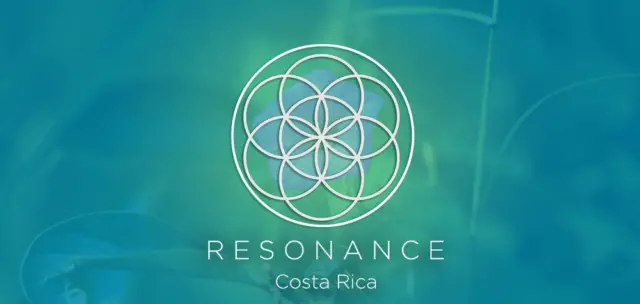Beyond national parks and government programs, a growing number of Costa Ricans – small farmers, landowners, and cooperatives – are choosing to let their land grow wild again. Through this they are redefining conservation from the ground up.
In the 1970s and 1980s, Costa Rica lost over half of its forest cover due to cattle ranching, monoculture, and logging, according to the United Nations Climate Change, the government created the Payments for Environmental Services (PES) program in 1997, paying landowners to conserve or restore forested areas.
As of today, over 1.3 million hectares of land are under PES contracts, involving more than 18,000 families, with a total investment exceeding 520 million US dollars. This state-led success has inspired a broader movement where private landowners rewild voluntarily, even beyond program requirements.
What Rewilding Looks Like in Costa Rica
Rewilding takes different forms across the country. In some areas, landowners simply allow degraded pastures or abandoned farmland to regenerate naturally, without replanting or managing. Others actively restore land with native tree species, particularly in regions identified as ecological corridors.
Many register their properties as Privately Protected Areas, a legal category under Costa Rica’s conservation law. According to the Land Conservation Network, over 572,000 hectares of private land in Costa Rica are now designated for conservation purposes.
For many Costa Ricans, rewilding is not just an ecological practice – it’s a return to memory, meaning, and responsibility. Some landowners say they are bringing back the landscapes of their childhood. Others describe forest regeneration as a form of healing – for the land, for communities, and even for themselves.
In the remote Osa Peninsula, rewilding has become a deeply collaborative process. The conservation NGO Osa Conservation works closely with local landowners to restore degraded land. As project leader Paulina Rodriguez explained in an interview with Mongabay: “So it’s the people that are actually doing the work, guided by us, of doing these restoration efforts and creating a healthy corridor in this elevation gradient.”
Rewilding Begins at Home
Rather than relying on external intervention, these efforts are rooted in local action: planting native trees, protecting water sources, and observing animal migrations. The forest is returning because people are stepping back – and stepping in – at the right times.
Elsewhere, in Sarapiquí, farmer Pedro García transformed a former cattle pasture into a dense secondary forest over the span of three decades. His seven-hectare plot now shelters sloths, strawberry poison-dart frogs, and dozens of native bird species. As reported by Earth.org, García is one of many Costa Rican farmers who are quietly reversing deforestation by simply letting the land heal itself.
These stories highlight an essential truth: rewilding isn’t just about trees – it’s about people. And in Costa Rica, it’s often the quiet decisions of rural families that are reshaping the ecological future of an entire country.
People Behind the Forest
Through FONAFIFO, Costa Rica’s national forestry financing fund, landowners receive between 50 US dollar and 80 US dollar per hectare per year for reforestation, forest protection, or watershed management, report the International Institute for Environment and Development.
Communities are also involved: schools engage in tree-planting projects, families track wildlife with phone apps, and cooperatives organize rewilding festivals or seed-sharing programs.
What Rewilding Achieves
The ecological benefits of rewilding are tangible. Biodiversity is returning, with species like tapirs, toucans, and monkeys reappearing in secondary forests. Water retention and soil fertility improve as native vegetation takes hold. And most importantly, these areas sequester carbon.
In 2022, Costa Rica received a 16.4 million US dollar payout from the World Bank through the REDD+ program after proving that its reforested areas had sequestered over 3.28 million tonnes of CO2.
A 2018 study led by restoration ecologist Leighton Reid from the Missouri Botanical Garden found that in Costa Rica’s Coto Brus canton, 50 percent of secondary forests were cleared again within just 20 years, and 85 percent were gone within 54 years. The findings, published in Conservation Letters, highlight the economic pressures and land-use changes that often undermine long-term forest regeneration.
New Models and Future Trends
Costa Rica is actively working to align private conservation efforts with national environmental planning. A central pillar of this strategy is the Biological Corridor System, coordinated by the country’s national conservation agency, SINAC (Sistema Nacional de Áreas de Conservación).
According to SINAC, there are currently 44 officially designated biological corridors, covering approximately 33 percent of Costa Rica’s continental territory and linking protected areas across both public and private lands (SINAC, 2024).
The development of this corridor system has also been supported by international partners such as the German Agency for International Cooperation (GIZ), which describes how local governance committees, Indigenous communities, and NGOs have played an active role in its design and implementation.
At the same time, Costa Rica is exploring new financial models for conservation, including carbon credit markets, biodiversity offset mechanisms, and rewilding-based ecotourism. In the Nicoya Peninsula, for example, several pilot projects are testing the integration of natural forest regeneration with regenerative agriculture, creating new opportunities for both ecosystem recovery and rural livelihoods.
Technology is also playing an increasingly important role in these efforts: drones, remote sensors, DNA barcoding, and citizen science apps are empowering local landowners to monitor wildlife activity and assess biodiversity gains over time.
A study published by the University of Costa Rica in the journal Revista de Biología Tropical emphasizes how privately protected areas are becoming hubs for hands-on conservation and participatory research.
Letting Nature Win
Costa Rica’s national parks are world-renowned, but the next chapter of conservation may be written not by governments, but by individuals choosing to step aside and let the forest return.
This quiet, decentralized form of stewardship shows that conservation isn’t only about control—it’s also about trust. In an age of climate disruption and ecological loss, Costa Ricans are showing what it means to rewild not just land, but culture, economy, and spirit.

